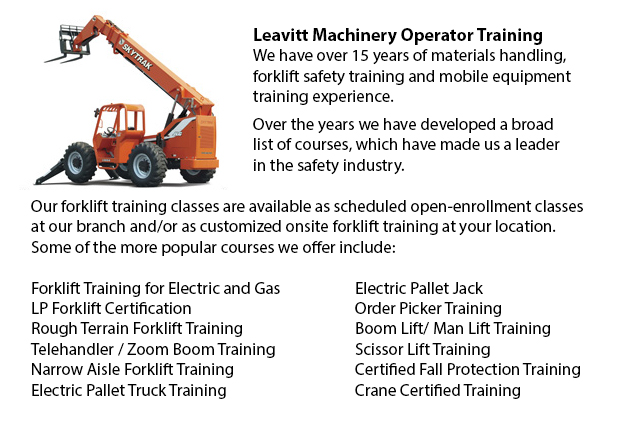
Zoom Boom Training Hamilton - Zoom Boom Training is designed to train operators on variable reach forklifts. The goals of the training are to impart an understanding of the physics of the equipment, and to be able to outline the operator's tasks. This program abides by North American safety standards for lift trucks. Zoom boom training and certification is accessible at the company's location or at our site, provided there are a minimum number of individuals training. Certification received upon successfully completing it is valid for three years.
A telescopic handler (also known as a telehandler) is similar in some ways to both a crane and a forklift. It is a helpful machinery designed with a telescopic boom that could lift upwards and extend forward. Various attachments can be connected on the end of the boom, such as bucket, pallet forks, muck grab or lift table. It is popular in agriculture and industry settings.
Telehandlers are most normally used along with the fork attachment in order to transport loads. The units have the advantage that they can reach places inaccessible to regular forklifts. Telehandlers are capable of removing loads which are palletized from within a trailer and putting them on high places such as rooftops. For some applications, they could be more efficient and practical than a crane.
The disadvantage of the telehandler is its instability when lifting heavier loads. As the boom extends with a load, the unit becomes increasingly unstable. Counterweights found at the back help, but do not solve the problem. The lifting capacity rapidly decreases when the working radius increases. Various machines come with front outriggers which extend the lifting capacity whilst the machinery is stationary.
A load chart helps the operator to know whether a given load is too heavy. Factors like for example load weight, boom angle and height are calculated. Various telehandlers have sensors that provide a warning or cut off further control if the unit is in danger of destabilizing.
-
Crane Training School Hamilton
Crane Training School Hamilton - We provide industry relevant programs in our crane training school. The course would provide our trainees with learning outcomes matching the current industry demands. Our small class sizes combine theory and hand-on... More -
Crane Ticket Hamilton
Crane Ticket Hamilton - The new kind of a crane can be either complex or simple, and cranes differ based on their application. Mobile cranes, for example are quite simple. A telescopic boom or steel truss mounts its movable platform. A system of pull... More -
Aerial Platform Training Hamilton
Aerial Platform Training Hamilton - Aerial forklifts can be utilized to accomplish many different duties executed in hard to reach aerial spaces. Many of the tasks associated with this type of lift include performing routine upkeep on buildings with... More -
Forklift Safety Training Hamilton
Forklift Safety Training Hamilton - People wanting work in businesses which utilize lift trucks have to undergo a forklift safety training course before becoming a certified operator of a forklift. There are several ways to go about acquiring forklif... More -
Aerial Lift Certification Hamilton
Aerial Lift Certification Hamilton - Aerial Lift Certification is for workers who require a thorough knowledge of aerial lift safety. Maintenance workers, construction craftsmen and supervisors require this training to ensure that operators and inspe... More -
Crane Safety Training Hamilton
Crane Safety Training Hamilton - Both crane operator and their employers need to know all the possible problems associated to the use of an overhead crane. All over North America, there is legislation which provides rules for the safe inspection, mai... More -
Telehandler License Hamilton
Telehandler License Hamilton - A telehandler or telescopic handler is an equipment that is frequently utilized in industrial and agricultural applications. It has the same appearance to a lift truck and even functions in a similar manner, even if, th... More -
Heavy Equipment License Hamilton
Heavy Equipment License Hamilton - Acquiring a heavy equipment license is mandatory to operate these large industrial machines. Certification could be obtained through a vocational school or private training. The license would allow the driver to ope... More

Forklift Training Hamilton
TOLL FREE: 1-888-254-6157
Hamilton, Ontario
forklifttraininghamilton.com
Email Us
About Us


